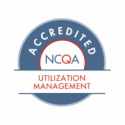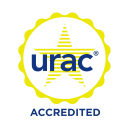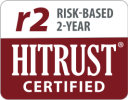 Technology has streamlined and improved products and businesses alike, without equally increasing the cost for improvements. This is called Moore’s Law: the idea that technological innovation doubles every two years. Administrative duties can be accomplished much more quickly and inexpensively with software programs and business apps. Cars can operate more safely with rear video and voice-activated unlock systems, without paying triple the price for these new features.
Technology has streamlined and improved products and businesses alike, without equally increasing the cost for improvements. This is called Moore’s Law: the idea that technological innovation doubles every two years. Administrative duties can be accomplished much more quickly and inexpensively with software programs and business apps. Cars can operate more safely with rear video and voice-activated unlock systems, without paying triple the price for these new features.
So why does every new minor and major medical procedure or treatment cost more? Shouldn’t developing medical technology help decrease costs, like technological innovations in other sectors, instead of consistently raising them? While healthcare technology is increasingly accurate or noninvasive, it is also making healthcare costs more outrageous and unpredictable, to the point that it threatens the future of the entire national economy.
Why Is Cost No Object in Medical Development?
The answer to this question is very simple: Improved medicines mean longer lives, as well as less deaths to disease, cancer and illnesses. People want to live longer. They won’t put up a fuss as long as their cirrhosis is reversed or the tumor is removed.
Insurance also plays a part in this. Patients are usually prescribed medications that have a generic alternative. Many insurance companies will pay for either one. Is that patient going to request the pharmacist to give him the less expensive one anyway? Most likely, no. Moreover, even if and when a prescribing doctor is aware of various medication cost differences, would the majority make a conscious effort to prescribe accordingly, when insurance will cover it either way?
Newer is Not Always Better
Not all of the improvements and technological advancements are necessarily better and/or more effective than the old ones. Medical technology and research is funded without question but is also often funded without comparisons or benchmarks to show whether or not the improvement justifies the huge amount of funding required to develop it.
Let’s illustrate this point.
There are types of procedures and surgeries implemented by doctors and facilities that not only have no scientific backing for improving the quality of a patient’s life but carry huge costs and risks with them. Plenty of back surgeries performed on patients make their movements and pain worse than before, for example, spinal fusion surgeries or rod implants or even Botox injections. Research and experiments result in effective drugs, but consider that about 95% of them fail, which means that one effective new medication costs millions of dollars to develop.
On the other hand, there are innovations like proton therapy, which optimizes cancer cell targeting via radiation. There are low-cost solutions to reduce toxic fumes and smoke caused by tools during surgery, reducing infection and illnesses spread among healthcare workers. Non-invasive heart operations replace ones that used to crack open the entire rib cage.
The solution to the technology creep may be solved with the same kinds of software, apps and technology that reduces cost and increases convenience for the rest of the world. There are apps that can measure your eyeglass’s prescription, email doctors to get a prescription, and allow parents to diagnose an ear infection. We need more health professionals and digital entrepreneurs alike to understand that the more digital the health industry becomes, the closer it gets to solving its biggest problem.
Adrienne Erin is a freelance writer and designer with a strong interest in the healthcare industry. Follow @foodierx on Twitter to get in touch, or read more of her health commentary on her blog, Miss Rx.





